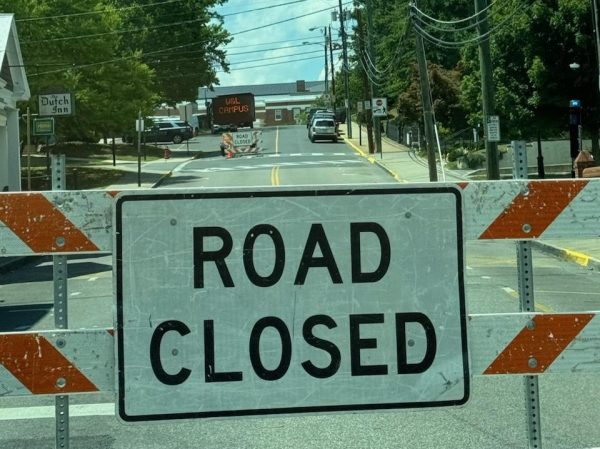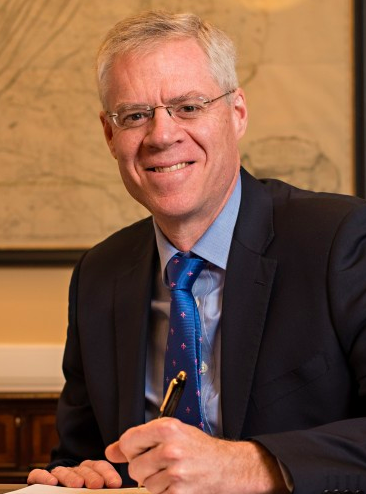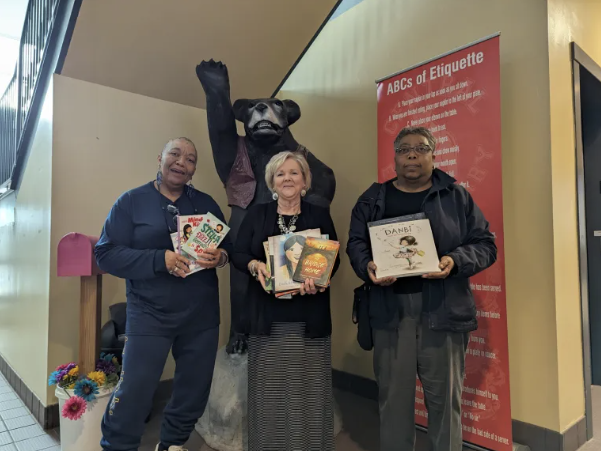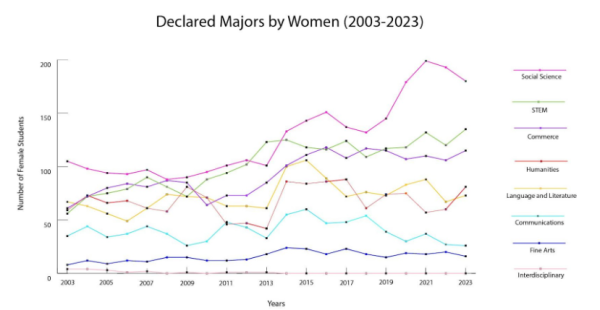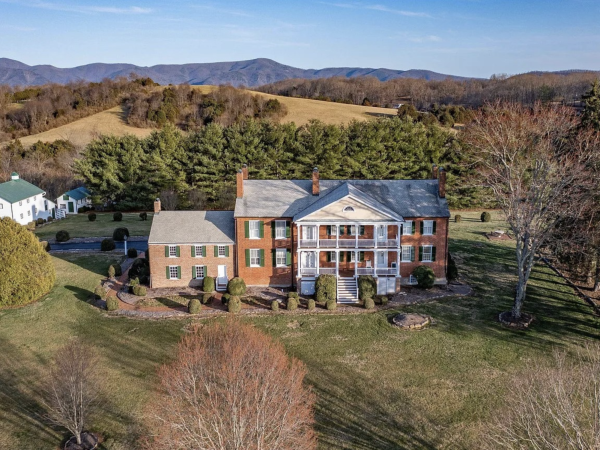A Q&A with Dean Keen: Interview by Maria Rachal
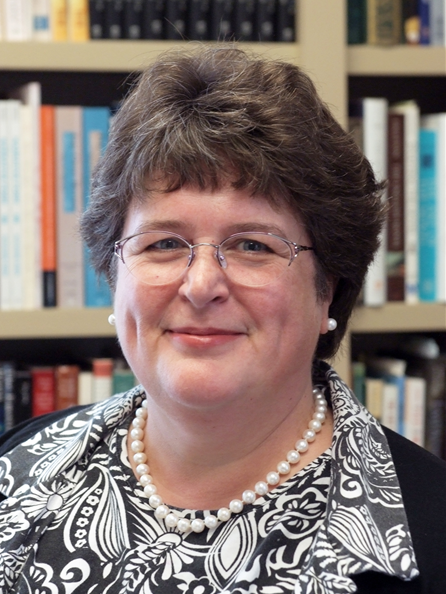
Photo courtesy of Washington and Lee
February 16, 2018
Dean of the College Suzanne Keen joined the Washington and Lee community in 1995, giving her over two decades to experience the university’s modern development. Though she was originally hired to teach English — which remains her foremost passion — Keen added an administrative role in 2012 as interim dean of the College, which became a permanent placement in 2013.
In December, New York liberal arts institution Hamilton College announced that Keen had been chosen to serve as the school’s vice president for academic affairs and dean of faculty, effective July 1, 2018. W&L has yet to announce a replacement for Keen’s position.
Fortunately, Keen said that having grown up in Pennsylvania, and having attended school at Brown University and Harvard University, she is poised to handle the northern cold and snow she may face at Hamilton.
As Keen prepares to wrap up over 20 years in Lexington, the Phi asked her to reflect on W&L — past, present and future. Keen said that her “most precious memories” here include viewing an inside-the-park grand slam by the baseball team, listening to the jazz band perform Frank Sinatra, watching the work of aerial dancers, and simply attending academic presentations by summer research scholars and her fellow faculty members.
The Phi: What prompted your decision to move on from W&L?
Suzanne Keen: “I’ve been really picky about which positions I would even look at, because for me, teaching at a small liberal arts college has been an important part of my vocation as a scholar and as an administrator, and I wasn’t really interested in most of the opportunities that were from institutions that were not like that.
“I was invited by the search firm that was handling the Hamilton College VPAA [or vice president of academic affairs] search to be a candidate … Hamilton in many ways is a lot like W&L: excellent small liberal arts college, excellent students.Obviously the location is really different — it’s negative eight [degrees] there right now.
“But it wasn’t like I was looking at the classifieds, I’ve been very happy here.”
What made this job opportunity at Hamilton stand out? How will your new role differ from your current position at W&L?
“What’s similar about the work: here at W&L I do a lot of work that’s the same as what a dean of faculty does. But because I have two fellow deans — Dean Straughan and Dean Hellwig, they have their own faculties — I’m not responsible for both faculties. So that’s a difference. At Hamilton I’ll be responsible for the whole faculty, and all of the staff who work in the academic areas. Also, a difference between Washington and Lee and Hamilton is because we have three schools, we have a provost; they don’t have a provost, they have a VPAA. And so in effect, I’ll be working directly for and with the president, whereas here I work for and with the provost. So it’s a different structure; it means a little more responsibility for things I don’t currently do, and a lot of the same work.”
Will you have the chance to continue teaching English classes?
“I hope so, but not in the first year. It was not ruled out, and they certainly know it’s something that I care about a lot. But in the first year I’m going to be learning the place.”
What are you most looking forward to at Hamilton?
“The thing that drew me to Hamilton [was that] it is purely a liberal arts college. So they have a lot of students who are majoring in economics and politics like we do, but the percentage of students who are majoring in business and accounting at Hamilton is zero. Zero percent. So the student body is a student body that has chosen to come to a pure liberal arts college, and that’s really meaningful to me because that’s my world…
“The thing that really attracts me to the curriculum is that they have an open curriculum, which is the same kind of curriculum that I was educated in as an undergraduate at Brown, which is to say that they don’t have distribution requirements … there are some expectations about PE, and they have to take some writing intensive courses … But this means that every time you’re in a class — no matter what it is — everyone else who’s there wants to be there … it really changes the way you feel about your work, because it’s driven by your own curiosity, your own interests.
“And that whole thing that we have where students want to know if something ‘counts?’ At Hamilton, everything ‘counts.’ So I’m really attracted to that. It’s a different educational philosophy.”
There has of course been a lot of change at W&L since you arrived in 1995. What do you think feels the same? What feels completely different?
“In terms of what seems the same, Lexington and Rockbridge are still absolutely beautiful and wonderful places to live and work. Washington and Lee is still a friendly place where we’re a real community, and I think the speaking tradition — which everyone is always worrying is dead and gone — is still with us, and we still are the kind of place where people know each other and say hello to each other. I hope that that will continue, it’s a really important part of our identity. I think that the student commitment to the honor system is as strong as ever, and I think that’s a really identifying quality of Washington and Lee.
“And I think that the changes are really largely very very positive things. When I came to Washington and Lee, the students were really, really good. And now, they’re better. And so there’s been that wonderful impact of the Johnson Scholarship that has affected not just the individual Johnson Scholars … but really the whole class that has come in along with the Johnson Scholars. I remember, I was teaching full-time in English when the first class of Johnsons came in, and it wasn’t just the Johnson Scholars — it was a marked difference in the whole class. So, everybody has benefitted, and everyone who teaches at W&L has benefitted immensely from the intellectual curiosity and the energy for debate … Don’t get me wrong, the students I was teaching in the ‘90s were terrific students and they’ve gone on to do terrific things, but I think there has been an improvement in that light.
“There’s a tiny bit more diversity in the student body — there’s been some improvement, not as much as we’d hoped for. Back in 2001 and 2002 … the faculty and the board of trustees cooperated in setting some goals for the institution in improving diversity; both in the presence of ethnic minorities, and also students from lesser socioeconomic backgrounds. They also encouraged growth in the number of Jewish students; one of the results of that was that Hillel was built — a great positive change.
“And so some of those goals have been realized, and some of those goals have not been realized. 15 years have passed and we’ve made some progress, but perhaps not as much as we might have hoped. When you compare where we are with our peers — the schools that are like us in the educational universe — I think that we have not made the same progress as some of them have in the same period of years. We remain a very white place and a very wealthy place. And that’s something that I hope W&L can continue to work on.
“I’m encouraged by the fact that every time President Dudley speaks in public about this subject he seems to be resolved to move in the direction of need-blind admissions, to move in the direction of increasing the number of students who come from not just the Pell-eligible group of neediest students, but also middle-class students … that’s a priority. As a dean, I’ve been working on the hiring side of that for faculty diversity, and that, again, has improved slightly, but not as much as one would have hoped.”



